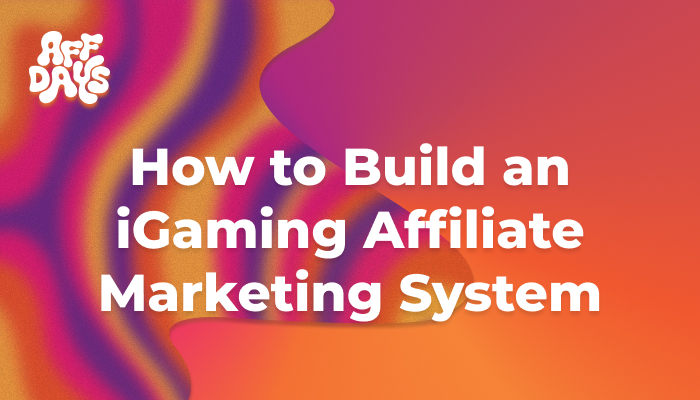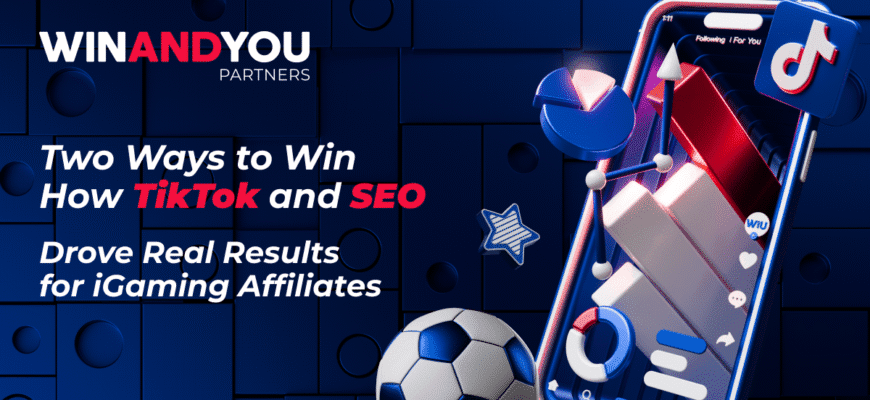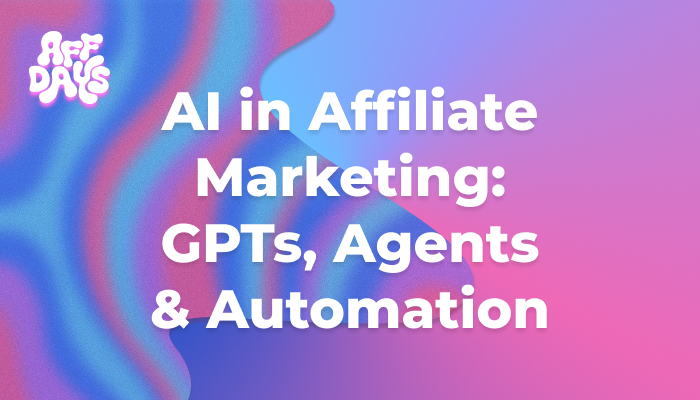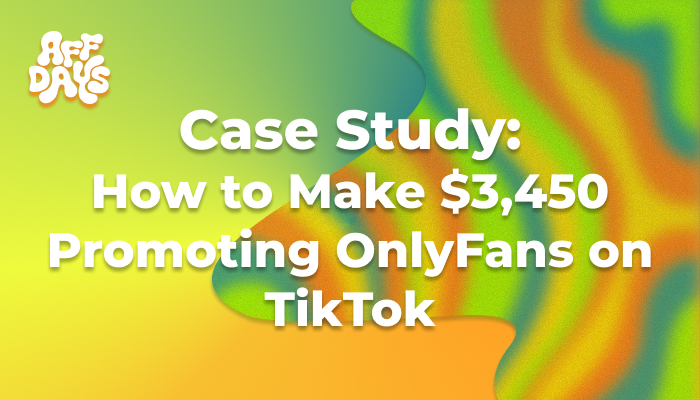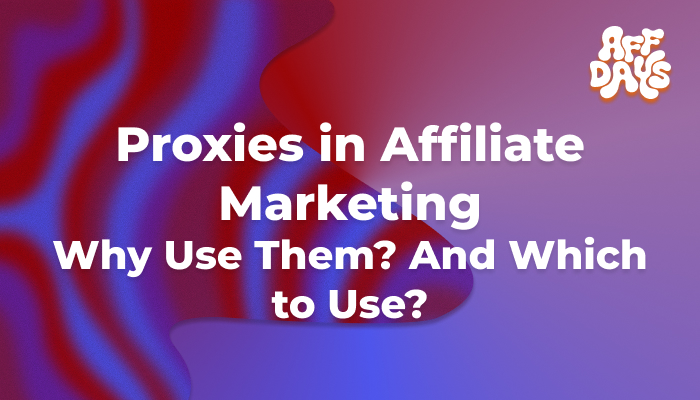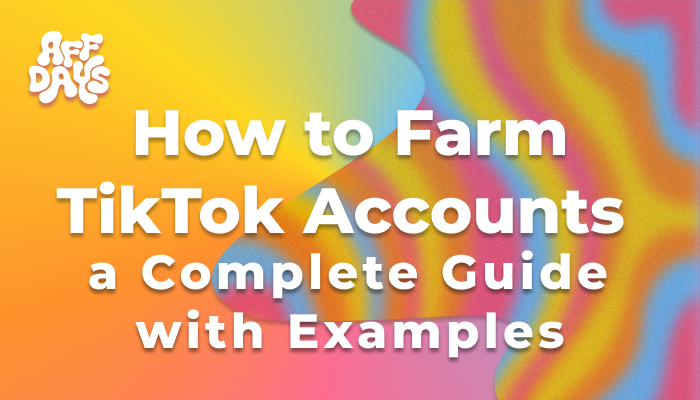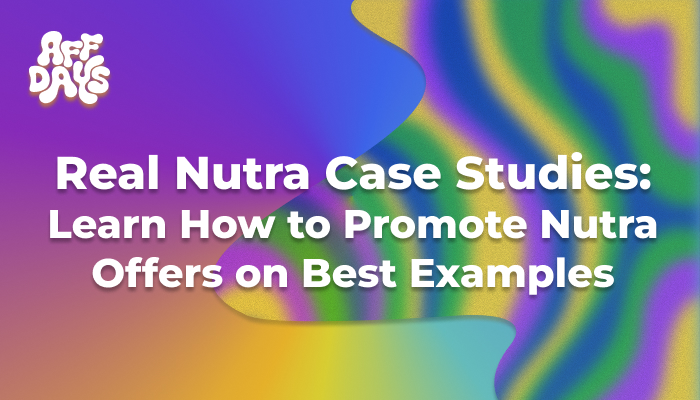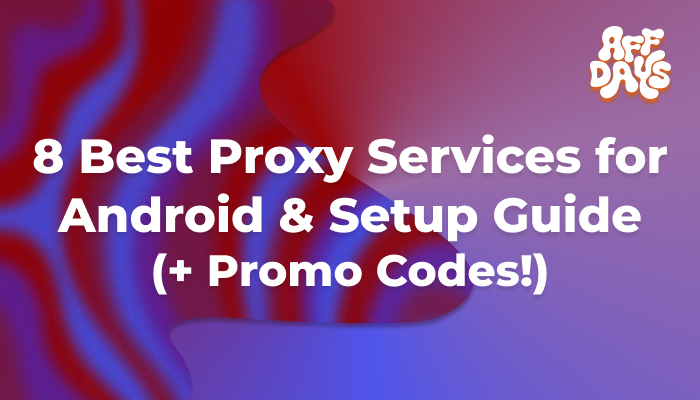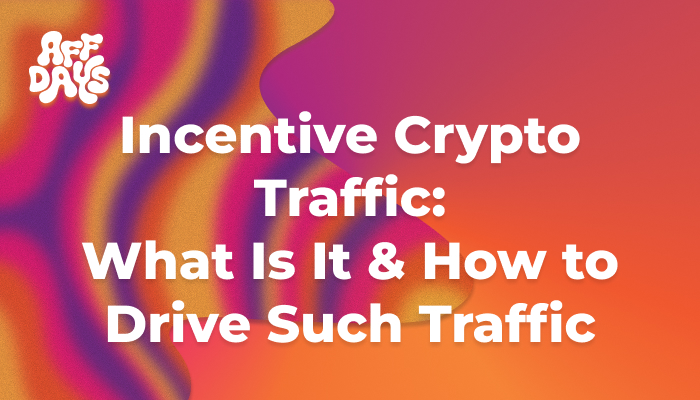The global iGaming market is expected to reach $125.6 billion by 2027, making it one of the most lucrative niches for affiliates. Various sources indicate that 1 in 5 people have gambled in the past year, with the average revenue per user being around $322.66.
While there are numerous gamblers, you’ll need a well-planned iGaming affiliate marketing system to compete with over 8,000 global casinos. Read on to learn about how to promote online gambling offers and what to consider in your campaigns.
- Key Takeaways
- What is iGaming in Affiliate Marketing?
- Why Choose the Gambling Vertical?
- Types of Gambling Offers in Affiliate Marketing
- Based on Subcategories
- Based on Program Payouts
- Target Audience in the Gambling Vertical
- Tier 1, Tier 2, and Tier 3 Countries
- Regulatory Issues
- SEO Strategies
- ASO Strategies
- Almost Free Traffic
- Typical Portraits of Online Casino Players
- Casual players
- High rollers
- Sports bettors
- Crypto enthusiasts
- Gambling addicts
- Traffic Sources & Funnels in iGaming Marketing
- Telegram Funnels
- 1. Create Channels for Different Sources
- 2. Create a Telegram Bot
- 3. Generate an Audience
- 4. Combine These Approaches
- SEO Casino Marketing
- Paid Acquisition
- Social Media and Influencer Marketing
- Email Marketing
- Summary
Key Takeaways
- The iGaming market works even in countries that officially ban gambling;
- Use native ads for Tier 1 markets, and focus on banner ads and promotions for Tier 2-3 countries;
- Localize creatives, payment options, and messaging to improve conversion rates in each GEO;
- Telegram funnels are the leading trend for iGaming marketing in 2025-2026;
- Monitor compliance and ad policies closely to avoid account bans and costly fines.
What is iGaming in Affiliate Marketing?
iGaming covers everything related to online gambling: casino games, sports betting, poker, and others. This niche balances between grey hat and black hat strategies due to significant regulations across all jurisdictions. However, the commissions are typically 2 to 4 times bigger compared to other niches.
Why Choose the Gambling Vertical?
Gambling is one of the largest niches in affiliate marketing. Let’s take the United States with a population of 340 million as an example, where 85% of adults have gambled at least once in their lives. The iGaming market is immense and ensures you get a global reach.
Revenue-share rates are often in the 25-35% range of net gaming income. These rates are much higher than in other industries. Some examples of the best revshare rates are:
- PIN-UP partners: 50%;
- Batery Partners: up to 55%;
- GamblingCraft: 50%.
You can learn more about the best gambling affiliate programs & networks on AffDays.
Types of Gambling Offers in Affiliate Marketing
If you’re new to iGaming marketing, then you must understand the types of offers in this niche. They are divided based on their gaming approach and payout models.
Based on Subcategories
Gambling offers are typically classified into five key categories based on their specifics.
| Subcategory | Description |
| Online casinos | The most popular and competitive segment in iGaming. Affiliates promote platforms that offer slot machines, roulette, blackjack, baccarat, and live dealer games. |
| Sportsbooks | These platforms allow betting on sports events like football, basketball, tennis, cricket, and eSports tournaments. |
| Poker rooms | Focused on multi-table tournaments, Sit & Go’s, and cash games. The audience is smaller than casino or sportsbook players but often highly engaged and loyal, with repeat play. |
| Bingo & lotteries | These products target a more casual audience, often skewing older and more female compared to casino or sportsbook players. Bingo and lottery offers usually have lower payouts but can convert well due to their accessibility. |
| Crypto casinos | A fast-growing niche attracting crypto users who prefer anonymity, fast deposits/withdrawals, and no-KYC requirements. Popular among younger demographics, especially in Tier 2 and Tier 3 markets where fiat payment restrictions are common. Conversion rates are typically higher. |
Based on Program Payouts
There are two key earning models in iGaming affiliate marketing. You’ll either make money on user actions or profit from their losses. Some programs offer a combination of both models.
| Model | Description |
| CPA | You are paid a fixed one-time commission when a referred player registers and makes their first deposit. Expect around $50–500+ per acquisition depending on country regulations and traffic quality. |
| Revshare | You earn a percentage of the player’s net losses over their entire lifetime. Standard ranges are 20–35%, while premium deals can go as high as 40–50%. |
| Hybrid | A combination of CPA and revenue share, offering a certain guarantee with long-term upside. For example, this could be $100 CPA with 20% revshare. |
Target Audience in the Gambling Vertical
Knowing your target audience is a core element of your iGaming affiliate marketing system. You must understand what motivates people to sign up, their expectations, and economic contexts to create appropriate ads that convert. Let’s take a general look at this matter.
Tier 1, Tier 2, and Tier 3 Countries
Countries are divided into three tiers based on their purchasing power and regulatory requirements:
- Tier 1 countries: users expect secure payment methods, clear licensing, and premium branding. They respond well to trust-based marketing. Bonuses are important, but reputation and compliance matter more. However, because of the strict regulatory limitations and privacy concerns, many players move to offshore casinos. Most affiliate networks work with these too.
- Tier 2 countries: users are bonus-driven and mobile-first, using local payment methods for convenience. Players are responsive to flashy creatives, sports tie-ins, and seasonal promos.
- Tier 3 countries: users tend to use low-stakes betting, prepaid cards, mobile wallets, or even cryptocurrency due to lack of traditional banking access. They are highly price- and bonus-sensitive, often motivated by lotteries and small-stake sports bets.
Regulatory Issues
There also are some unique traits that you must know from each area.
Gambling is heavily restricted in South Korea, Japan, the United Arab Emirates, and many other countries. That doesn’t mean it disappears: many players use online casinos registered abroad. South Korea’s iGaming market alone was estimated at $9 billion in 2024 and continues to grow.
In the CIS region, Russia leads the advertising market by reaching $11.4 billion in 2024. You’ll have to use VK Ads (myTarget), Yandex ads, and Telegram channels to succeed in this area. All these services work in all CIS countries but Ukraine, which recently banned the usage of VK and Yandex, using Telegram and Meta’s social media products.
Russia requires extensive localization and compliance with local policies with the introduction of ad bans for “foreign agents.” Ukraine’s market is actively fighting iGaming advertising and uses significant fines for influencers promoting gambling. Kazakhstan, one of the key markets, is considering a similar approach as well.
Affiliates work around these regulations by using multiple strategies.
SEO Strategies
This includes two approaches:
- Drop domains: purchasing domains that have recently expired but had a certain authority and traffic history. By immediately publishing gambling-related content on these domains, affiliates quickly inherit the domain’s historical SEO value. This results in faster and higher rankings than building a website from scratch.
- Parasite SEO: leveraging the domain authority of websites like Reddit, Medium, and other established resources to host your own content. The content “parasitically” ranks quickly because it is nested under a powerful domain that search engines already trust.
ASO Strategies
Google’s Play Market and Apple’s App Store have recently allowed the launch of gambling apps on their platforms within jurisdictions that allow real-money gambling. These approaches are recommended to rank highly within both platforms:
- Textual optimization:
- Keyword selection: use brand- or slot-specific keywords for gambling apps, but broader sports-related keywords like “match statistics” for betting apps. Tools like Google Trends are used usually for analysis.
- Metadata: optimize the app’s name, subtitle, and description with relevant keywords. Be careful to avoid direct and prohibited terms by using synonyms or indirect phrases.
- Visual optimization:
- Visuals: a trustworthy and attractive icon is a must-have to be noticed and remembered. Use high-quality screenshots and, cautiously, video previews to demonstrate the app’s features;
- Reputation management: maintain a high rating (ideally above 4.0) by purchasing positive reviews, as most organic feedback tends to be negative. Reviews and developer responses are indexed by Google Play and App Store, offering another channel for keyword inclusion;
- Security: to minimize the risk of bans you should isolate projects using separate proxies and developer consoles for each app. You can also use “shell” apps to mask the gambling link until after installation.
Many affiliates actively buy apps with solid ASO rankings to generate additional organic traffic. This typically involves apps with a similar audience like sports score trackers, prediction tools, slot simulators, and others. Inside these apps, affiliates place banners, push notifications, or links leading to gambling brands.
It is also common to redirect users to landing pages once the apps are launched, although this method is riskier and may lead to the app being removed from both platforms.
Almost Free Traffic
Using “almost free” or “conditionally free” traffic is a highly appealing strategy for affiliates due to its low cost and potential for high-volume traffic to gambling offers. This involves promoting offers without spending money on advertising:
- Social media: creating “doorway” groups on Facebook, VK, Twitter, and others optimized with casino brand keywords, descriptions, and bots to instantly rank high in the social network’s search;
- Telegram: cloning popular channels like streamers or media and injecting gambling links, or running fan groups to subtly place ads;
- Vertical videos in TikTok & Reels: posting viral clips with casino logos and promo codes, which drives traffic to accounts linked in the bio.
We recommend researching each specific country separately for better results.
Below is an overview of the key countries in each tier and their peculiarities.
| Tier | Country Examples | Average Payouts | Difficulty |
| Tier 1 | Australia, Austria, Belgium, Canada, the Czech Republic, Denmark, Finland, France, Germany, Italy, the USA, and others. | CPA: $200-300;Revshare: 40-50%. | High: strict regulations and high traffic costs. |
| Tier 2 | Greece, Hong Kong, Hungary, Japan, Latvia, Lithuania, Macedonia, Malta, Moldova, Monaco, Turkey, Ukraine, the United Arab Emirates, and others. | CPA: $30-100;Revshare: 15-30%. | Medium: moderate traffic costs and responsive audience. |
| Tier 3 | Colombia, Comoros, Costa Rica, Congo, El Salvador, Ecuador, Egypt, Dominican Republic, Ethiopia, Gabon, India, Kazakhstan. | CPA: $1-10;Revshare: 15-20%. | Low: cheap traffic, huge audience, bonus-sensitive players. |
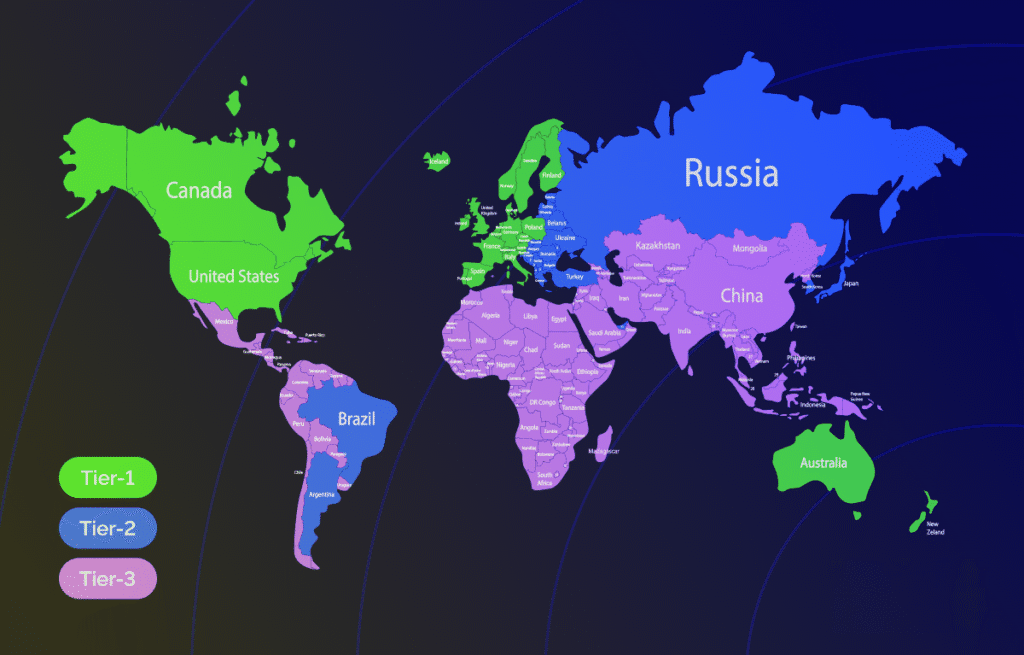
Typical Portraits of Online Casino Players
Successful online casino affiliate marketing requires you to know your audience’s preferences better than anyone else. Fortunately, each tier has four typical types of players with certain behavior patterns:
Casual players
They gamble for fun and relaxation. They are responsive to free spins, small deposit bonuses, and gamified experiences. Found across all tiers, but especially common in Tier 1 and Tier 2 markets where gambling doubles as entertainment.
High rollers
They spend thousands per month and expect exclusive perks, personalized support, and loyalty programs. More common in Tier 1 countries where disposable income is higher.
Sports bettors
They place wagers tied to football, basketball, cricket, eSports seasons, and others. Highly responsive to real-time promotions, odds boosts, and event-driven campaigns.
Crypto enthusiasts
This is the younger demographic drawn by fast payouts, anonymity, and no KYC policies. Highly active in Tier 2 (LatAm, Asia) and Tier 3 (Africa, South Asia), where traditional payment restrictions are common.
Gambling addicts
One big issue across all markets and players is gambling addiction. For example, India has 140 million active players who regularly take part in iGaming activities. These numbers reach 340+ million during seasonal events and championships. Casinos use various methods to limit addiction:
- KYC checks to ensure players are of legal age and don’t use multiple accounts;
- Self-exclusion capabilities that allow players to limit their sessions manually;
- Deposit limits and cooldown periods to prevent overspending.
These measures are primarily enforced by local laws and regulations.
Traffic Sources & Funnels in iGaming Marketing
Let’s take a look at the best iGaming digital marketing approaches.
Telegram Funnels
Telegram is the third most downloaded messenger in the world, with over 1 billion daily active users.
Based on various estimates, it’s most popular in:
- India;
- Russia;
- United States;
- Indonesia;
- Brazil;
- Vietnam;
- Ukraine;
- Kazakhstan;
- France;
- United Kingdom, and others.
Telegram is the perfect place to convert and promote gambling offers due to its huge audience, anonymous capabilities, and rich functionality. The main point is that you get everything you need to move the user across the sales funnel in one single application.
Let’s take a look at a typical Telegram marketing funnel.
1. Create Channels for Different Sources
Telegram is known for blocking accounts and channels working within grey niches, and gambling content falls right into this category. You’ll have to prepare multiple accounts to prevent this. We share how to automate Telegram account creation in bulk with special software in our previous guide.
You should create several types of channels:
- A public channel with news, promotions, and everything else like your casino’s typical social media;
- A private channel with user reviews and payout screenshots;
- A community channel for users to communicate (optional).
Creating these channels is necessary to obtain user trust. If they see that the casino has many active users and regularly publishes content, they are more likely to make a deposit. Most casinos use their public channels to share promotions and news. Here’s an example from a casino’s Telegram channel.
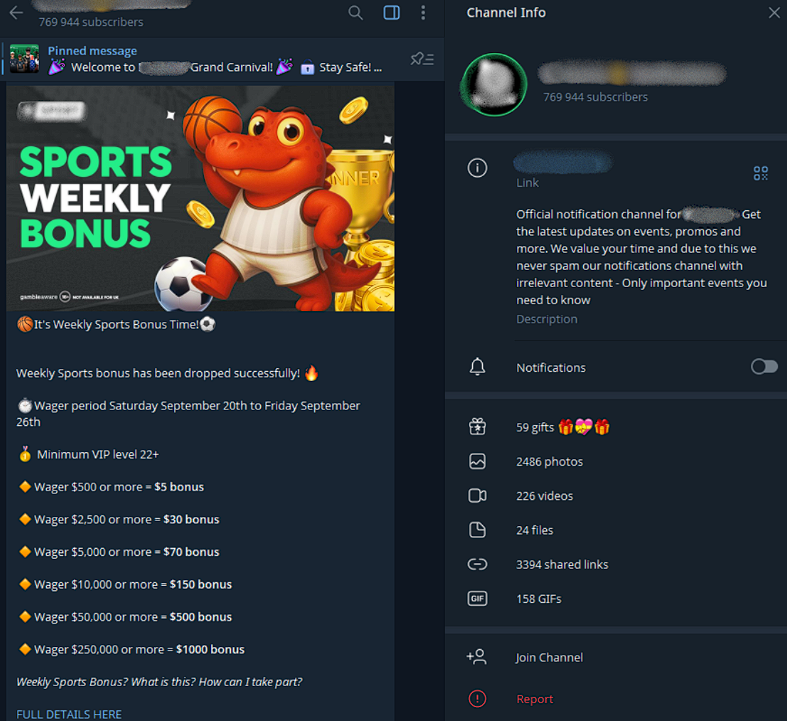
Private channels are used to share sensitive information and create a feeling of exclusiveness. Apart from that, it also helps you avoid regulatory issues and potential bans. For example, some casinos offer their players a bonus for sharing their reviews and payouts.

It prompts other players to share their review to get a personal bonus.
Although there are many players who leave real reviews, many affiliate marketers resort to black hat techniques and create fake screenshots. These are often used in paid ads across Telegram channels, supported with stories of “big wins to get out of poverty.” While unlikely to face legal consequences, you might undermine your reputation on the market.
Additionally, they also buy views and reactions from social media marketing agencies to create a trustworthy look for their channels.

from a casino, used in ads & promotions to “prove the trustworthiness of the resource.”
However, such ads are often removed once every few days and published again to avoid potential regulatory issues. This recently happened in Ukraine, where the state regulatory body fined a blogger almost 5 million UAH (roughly $120,000 USD) for illegal gambling advertising.
2. Create a Telegram Bot
Telegram bots for gambling are a new trend in the industry, with the search term “Telegram casino” getting 1840% growth over the past 5 years. Bots are used for two main reasons:
- Improve user engagement and personalize notifications for better retention;
- Simplify access to casino websites via Telegram mini apps.
Jetton is a perfect example of this approach, as it’s one of the first casinos to implement it in their marketing strategy. Players launch the bot, automatically sign into the app, and can start playing within several clicks. The browser history stays clear, and you can easily archive the chat – ideal for those hiding their gambling activities from other people.

3. Generate an Audience
If you have an empty account with no followers, people will be unlikely to subscribe and go down the marketing funnel. You’ll need at least 1000+ followers to increase trust in your resources. This can be achieved by using subscriber boosting services. It will cost you around $10 per 1000 subs on Telegram.
Once you build this initial layer, you can start attracting an organic audience through:
- Targeted ads on social media;
- Influencer collaborations;
- Banner ads on websites, etc.
Use separate accounts for social media ads because gambling promotions are often banned there. Considering iGaming promos frequently include NSFW content, you’ll have to follow our guide on promoting adult creatives on Facebook and other platforms.
4. Combine These Approaches
All your Telegram sources must include links to each other. This ensures players can easily navigate your resources and access what they want. Also, you can integrate links with trackers to monitor performance and test.
For example, the casino below adds links to three sources:
- Eng channel;
- Community forum;
- Crypto token channel.

“A faster method is Facebook + Telegram: sending users directly to Telegram after seeing Facebook ads. It’s simpler, but this approach may result in higher churn due to less engaged users.” — 888STARZ Partners on the AffiliateFix Forum
SEO Casino Marketing
Google’s advertising policies require country-based certification, which limits your capabilities with PPC traffic (although you can rent Google Ads accounts to run gambling campaigns from them). That’s why Google Ads mostly is not an option here, so you should focus on SEO traffic. Although organic SEO is hard to achieve, it’s one of the biggest traffic sources in the online casino industry.
Many affiliates solve this issue by building a network of review websites.

Here’s how this works:
- Create multiple single-page websites with the title “XXX Casino Review for 2025”.
- Research potential keywords through Ahrefs or Semrush to integrate into the page.
- Write a detailed review with types of games, payments, support info, and more.
- Integrate your affiliate links into brand mentions and registration prompts.
- Go live and see how the traffic works out.
For most effective techniques, see the ‘SEO Strategies’ section above.
Users often google reviews on casinos to find out whether they’re reliable, so you can use their interest to your advantage. Many established review websites also allow paid guest posting for casino overviews. This is a practical option if you would rather not host your own websites.
Paid Acquisition
Paid acquisition is the key behind most high-performing iGaming affiliate campaigns. You’ll have to invest your own money into targeted traffic from ad networks, social media platforms, and other sources to attract players. Typical paid traffic channels include:
- Popunder and redirect traffic: open a new browser window or tab beneath the main screen, displaying the landing page after the user’s interaction. It delivers massive reach at low CPMs, working best with aggressive creatives and simplified funnels. Best choice for tier 2-3 markets.
- Native advertising: integrates gambling ads into editorial articles on mainstream websites, providing a soft-sell approach. This can even be a publication on a reliable site titled “How Player X Turned $10 Into $10,000.” This approach is ideal for Tier 1 GEOs and works with long-form funnels.

- Social media marketing: involves setting targeted ads and collaborating with influencers on Instagram, Facebook, and TikTok. This is where the most engaged and emotionally reactive traffic in the iGaming vertical comes from. You need a combination of both direct and native ads here. However, you won’t be able to promote gambling ads freely in many countries. You’ll need to buy multiple Facebook ad accounts with previous spending to create ads without being banned.
If you use direct banners with “Limited offer” promotions, then it should lead users directly to the registration page. This works for people who don’t think through each step of their way. That’s the majority of your target audience in tier 2-3 markets.
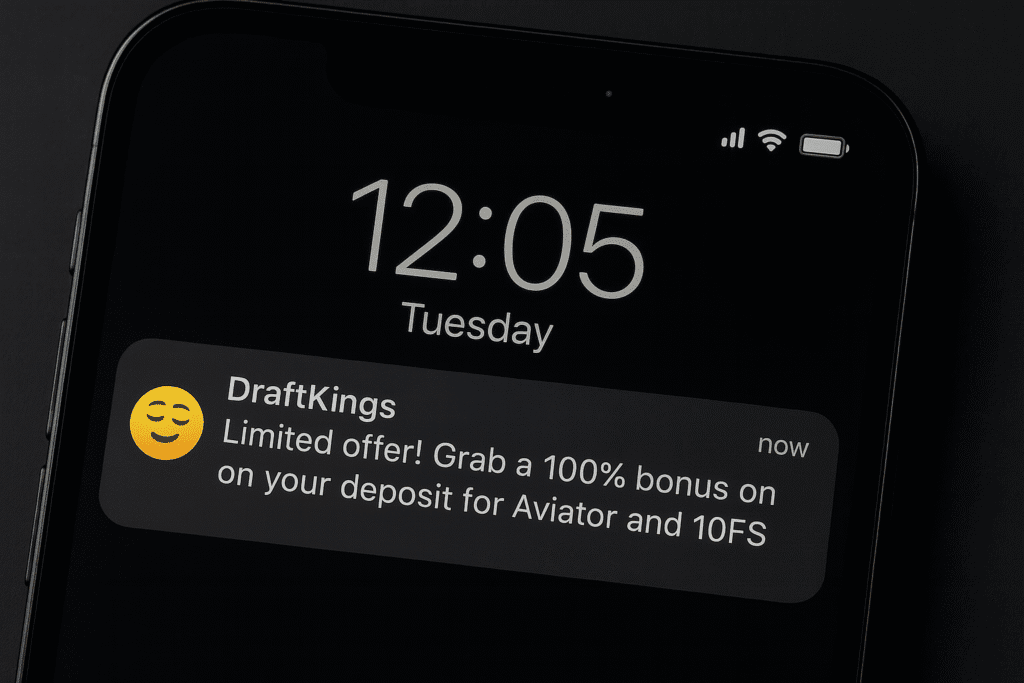
However, native ads work best with “thinking” players who need to weigh up all the pros and cons. You’ll need a long-form funnel with several steps. For example:
- New headline.
- Entertainment article.
- Casino review.
- Sign-up page.
You should gain these users’ trust before converting them into players.
If you succeed, you’ll gain users with high purchasing power and longer engagement.
Learn more about the types of promo materials that work in gambling here.
Social Media and Influencer Marketing
Social media dominates the discovery phase for new casino and betting brands, attracting high-converting traffic. Each platform serves different purposes:
- TikTok: fast and emotional content with wins, bonuses, and “luck challenges”;
- Instagram: visual storytelling, influencer reels, and giveaways;
- YouTube: short ads and “educational” videos with “casino winning strategies”;
- Telegram: an all-in-one platform for boosting loyalty and retention.

Affiliates typically balance between these two options:
- Setting targeted ads from third-party accounts.
- Collaborating with influencers and sharing revenue.
There’s also a third choice: almost free traffic. The most common approach here is to create or buy an active social media account with memes and any other viral content. It’s called “almost free” because it is indeed almost free compared to other traffic sources where you would pay a lot more.
This works with vertical videos on YouTube, Instagram, TikTok, and NSFW content on Reddit. You publish the content and add an affiliate link to your casino in the comments and post description. Sometimes you might have to pay for account boosting or for ad creatives development.
Regardless of your choice, you’ll have to comply with each platform’s requirements:
- Meta’s gambling ads policy for Instagram and Facebook;
- YouTube’s policies on online gambling content;
- TikTok’s advertising policies on gambling and games.
Or be prepared that your accounts will be banned every now and then, meaning a shorter lifespan and lesser ROI (because you will have to buy more accounts).
Influencers typically mention gambling ads in stories or reels that are deleted later on to prevent being banned. You can comply with all the platform’s regulations and still lose your account. This is a common occurrence among affiliates who promote iGaming offers.
It’s also worth noting that now many influencers and bloggers from Kazakhstan, Azerbaijan, Brazil, India, and Ukraine are additionally facing legal charges from local jurisdictions. That’s why you’ll have to buy multiple social media accounts to launch ads from them and stay anonymous.
Email Marketing
Email marketing is another powerful traffic channel that works best for supporting player engagement and retention. Various statistics claim that this approach’s ROI reaches 4200% in iGaming. Most emails are used to share exclusive offers and bonuses, attempting to attract the user’s attention.
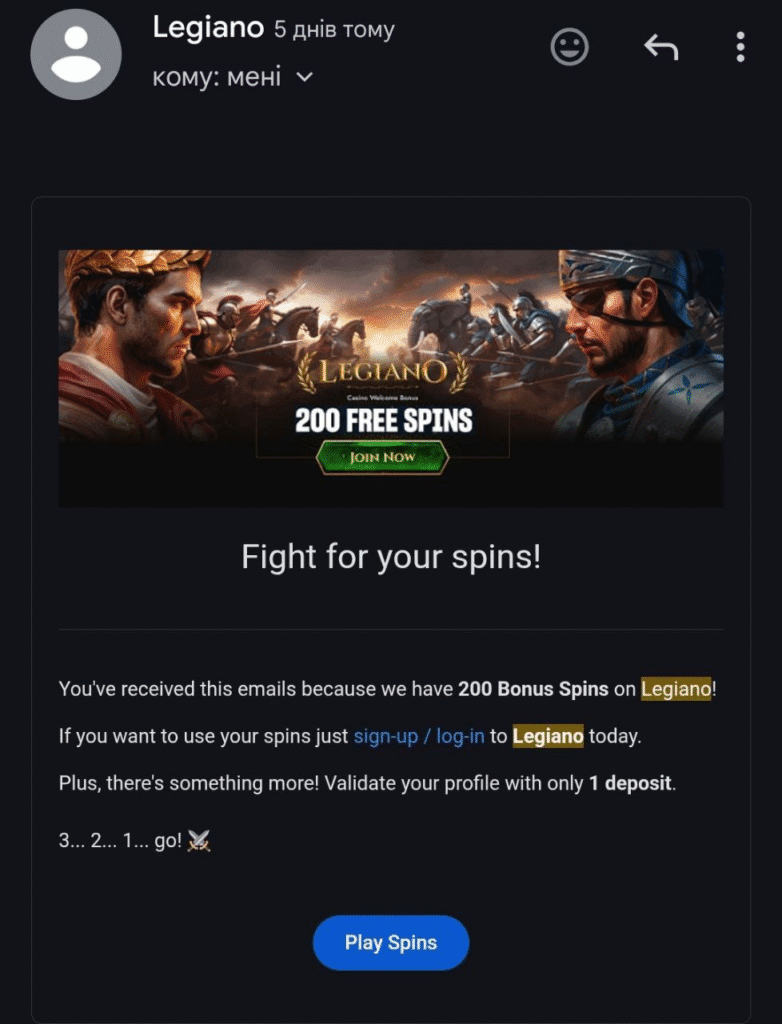
However, most of these usually land in the spam folder and are flagged “Suspicious” by providers. This means users won’t see your promotions unless they specifically open their spam.
“Adult and gambling content email is basically a deliverability nightmare, and there’s no magic solution that’ll let you bypass the filters.” – says DanielShnaiderr on Reddit.
You’ll need a strong technical infrastructure to maximize your chances of landing a direct message in your users’ mail. This checklist can help you cope with this challenge.
| Category | Action Item | Status (✔/✖) |
| SPF (Sender Policy Framework) | Publish SPF DNS records defining allowed IPs for sending. | |
| Verify SPF record syntax with a validator tool. | ||
| Include only authorized senders. | ||
| DKIM (DomainKeys Identified Mail) | Set up DKIM to sign outgoing emails. | |
| Confirm DKIM validation via MXToolbox or MailTester. | ||
| Rotate DKIM keys periodically. | ||
| DMARC (Domain-based Authentication) | Create DMARC record aligning with SPF/DKIM. | |
| Start with p=none before enforcing stricter rules. | ||
| Review DMARC reports weekly. | ||
| IP / Domain Reputation | Use a dedicated IP/domain for iGaming promotions. | |
| Warm up IPs gradually to build trust. | ||
| Monitor blacklists regularly. | ||
| Keep spam complaint rates below 0.1%. | ||
| Mail Infrastructure | Set up reverse DNS (PTR record) for sender domain. | |
| Enable TLS/SSL encryption for outgoing mail. | ||
| Configure abuse@ and postmaster@ for feedback loops. | ||
| Match server hostname with domain. | ||
| Segregate Sends | Use subdomain for gambling promos (e.g., play.brand.com). | |
| Keep transactional and promo traffic separate. | ||
| Use different sender identities. | ||
| Monitoring & Feedback | Track bounces, opens, and complaints daily. | |
| Pause sends to ISPs with filtering issues. | ||
| Remove inactive subscribers regularly. | ||
| Suppress users who report spam. | ||
| Content Optimization | Test campaigns via MailTester or GlockApps. | |
| Avoid spam triggers (e.g., “Free Spins,” “Win Big”). | ||
| Include unsubscribe link and gambling disclaimer. | ||
| Keep image/text ratio balanced. | ||
| Provide both HTML and plain-text versions. |
Summary
Building a profitable iGaming marketing system requires strategy, adaptability, and effective workarounds around compliance (although this might have legal consequences). You’ll have to find the channels that work best for your approach and invest all your resources in their promotion. The easiest way to start is by using targeted ads on social media. If you’re working with an offer in the long term, then you can build more complex funnels on Telegram and multiple websites.
Find the best gambling offer for your strategy here!

Ksenia has extensive hands-on experience in affiliate marketing, having worked as a media buyer and affiliate for several years across multiple verticals. Throughout her career, she managed traffic from a wide range of sources, tested funnels, and collaborated directly with advertisers and networks.
For the past six years, she has also been writing in-depth articles, reviews, and analytical guides about affiliate marketing. Her work has appeared on well-known industry blogs and platforms, where she covers topics such as traffic sources, compliance, creatives, tracking, and campaign optimization.
Today, Ksenia combines practical experience with editorial expertise, contributing as a guest expert to various affiliate marketing projects and helping educate both beginners and experienced affiliates.


